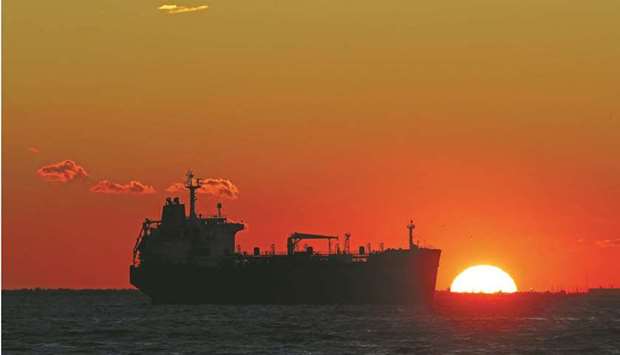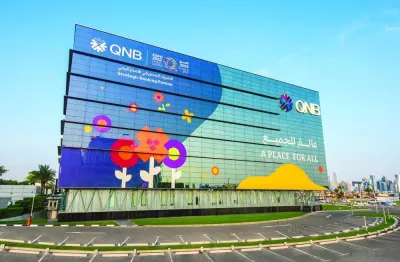Oil demand will grow sharply in the next few years as economies recover from the pandemic, Opec forecast on Tuesday, adding that the world needs to keep investing in production to avert a crunch despite an energy transition.
The view from the Organization of the Petroleum Exporting Countries contrasts with that of the International Energy Agency, which in a May report said investors should not fund new oil projects if the world wants to reach net zero emissions.
Oil use will rise by 1.7mn barrels per day in 2023 to 101.6mn bpd, Opec said its 2021 World Oil Outlook, adding to robust growth already predicted for 2021 and 2022, and pushing demand back above the pre-pandemic 2019 rate.
“Energy and oil demand have picked up significantly in 2021 after the massive drop in 2020,” Opec secretary-general Mohamed Barkindo wrote in the foreword to the report. “Continued expansion is forecast for the longer term.”
With oil demand recovering, Opec and its allies such as Russia — a grouping known as Opec+ — are unwinding record supply cuts made last year.
But there are signs some Opec+ producers are unable to pump more due in part to a lack of investment, and that has boosted prices.
Opec also lowered its estimates for longer-term oil demand, citing changes to consumer behaviour brought about by the pandemic and competition from electric cars.
Global demand is expected to plateau after 2035, the report said.
Last year’s report said world oil demand would exceed 2019’s rate in 2022, not 2023.
Now demand is expected to reach 106.6mn bpd in 2030, down 600,000 bpd from last year’s figure and 11mn bpd lower than Opec’s view in 2007 of what 2030 demand would be.
Assuming a faster take-up of existing technology, the Accelerated Policy and Technology Scenario, demand could be falling by the 2030s, according to an Opec chart showing a more pronounced demand drop-off than a similar chart last year.
“Tele/homeworking is becoming a norm for many companies as a result of the pandemic,” Opec said. “Long-term oil demand growth will be limited by growing penetration of electric vehicles.”
Last year Opec+ agreed record output cuts of 9.7mn bpd, the equivalent of 10% of global supply.
With demand recovering, those barrels are being returned to the market but Opec said it was essential to step up investment in supplies to avert a future crunch.
Last year upstream oil capital spending dropped by nearly 30% to about $240bn due to the pandemic.
“It is clear that underinvestment remains one of the great challenges for the oil industry,” Barkindo wrote. “Without the necessary investments, there is the potential for further volatility and a future energy shortfall.”
Opec sees the demand for its oil rising in the next few years, but rising supply from the United States and other outside producers means Opec output in 2026 will likely be 34.1mn bpd, below 2019’s level, it said.
The group shifted last year to acknowledging demand would peak one day, after predicting growth for years.
This year’s 2045 demand forecast was trimmed to 108.2mn bpd, down 900,000 bpd from last year.
Still, Opec is upbeat about its future prospects, seeing its market share rising in later decades as competition from non-Opec producers will wane.
Opec expects US tight oil output, another term for shale, to peak around 2030.
“Oil is still expected to retain its number one position in the energy mix,” Barkindo wrote.
As Opec reopens the taps, African giants losing race to pump more
Top African oil exporters Nigeria and Angola will struggle to boost output to their Opec quota levels until at least next year as underinvestment and nagging maintenance problems continue to hobble output, sources at their respective oil firms warn.
Their battle mirrors that of several other members of the Opec+ group who curbed production in the past year to support prices when Covid-19 hit demand, but are now failing to ramp up output to meet soaring global fuel needs as economies recover.
The Organization of the Petroleum Exporting Countries and its allies (Opec+) agreed in July to add 400,000 barrels per day (bpd) to production from August until December 2021, slowly phasing out the unprecedented supply cuts.
However, Nigeria and Angola have underproduced by an average of 276,000 bpd so far this year out of their combined average Opec quota of 2.83mn bpd according to Refinitiv data.
They are likely to remain below quota through the end of the year, according to industry sources and Reuters calculations.
The oil not pumped is worth hundreds of millions of dollars.
Lockdowns aimed at stemming Covid-19 last year hindered the supply of spare parts and prevented maintenance work.
Companies battered by a 20-year low in crude prices also postponed major investments.
Kola Karim, chief executive of Nigerian producer Shoreline Natural Resources which has eight producing fields pumping around 50,000 bpd, said the backlog meant it would be one to two quarters before Nigeria could pump at its full capacity.
The maintenance backlog covers everything from servicing wells to replacing valves, pumps and pipeline sections.
Companies are also behind on plans to do supplementary drilling to keep production stable.
These issues impacted virtually all companies in Nigeria, Karim said.
“So now things are breaking...we’re now facing the music,” he told Reuters, though he added that the country would catch up on production by early 2022 as companies rush maintenance and repairs.
Two sources, one at Nigerian state oil company NNPC and another close to Angolan state oil company Sonangol, confirmed the countries were struggling to raise output.
Spokesmen at NNPC and Nigeria’s oil and finance ministries did not reply to requests for comment.
Oil Minister Timipre Sylva told journalists last week that he expected Nigeria to meet its quota within a month or two, but did not specify how.
The government has previously pointed to a recently signed oil overhaul law as key to boosting investment and production.
Angola’s finance ministry told Reuters that it could struggle to meet its target for years.
In June, Angola’s oil minister, Diamantino Azevedo, lowered its targeted oil output for 2021 by 27,000 bpd to 1.19mn bpd, citing in a statement production declines at mature fields, drilling delays due to Covid-19 and “technical and financial challenges” in deepwater oil exploration.
That is below the current 1.33mn bpd quota.
Angola pumped roughly 1.3mn bpd in 2020, down from its record peak above 1.8mn bpd in 2008.
It has embarked on a string of reforms to boost output.
“The reality is only five countries can actually hit these quotas in our view,” said Amrita Sen of Energy Aspects. “The rest are struggling with high decline rates and underinvestment.”
Those five are Saudi Arabia, the United Arab Emirates, Kuwait, Iraq and Azerbaijan.
In Nigeria, five onshore export terminals run by oil majors, which typically export around 900,000 bpd, handled 20% less oil in July than the same time last year, despite relaxed quotas, according to analysis shared only with Reuters from consultancy Hawilti Ltd.
The decline indicates lower production from all the onshore fields that feed these terminals.
Only French oil major TotalEnergies’ new deep offshore oilfield and export terminal Egina, had been able to quickly turn the taps back on, said Mickael Vogel, director at Hawilti, citing an analysis based on data from Nigeria’s Department of Petroleum Resources.
Onshore oilfield output has lagged as companies struggled with a lack of workers and cash.
“Putting those wells back onstream has been more challenging than they thought,” Vogel said.
Nigeria has not met its quota since July last year according to Refinitiv data.
Angola, Africa’s second-largest exporter, has pumped below its target since September last year.
It has struggled for years as its oilfields age and decline, and exploration has been insufficient to compensate, Justin Cochrane, director for African Regional Research for IHS, said.
Angola’s largest fields began production in the early 2000s and are past their plateau.

An oil tanker sits anchored off the Fos-Lavera oil hub near Marseille, France (file). Oil demand will grow sharply in the next few years as economies recover from the pandemic, Opec has forecast, adding that the world needs to keep investing in production to avert a crunch despite an energy transition.


